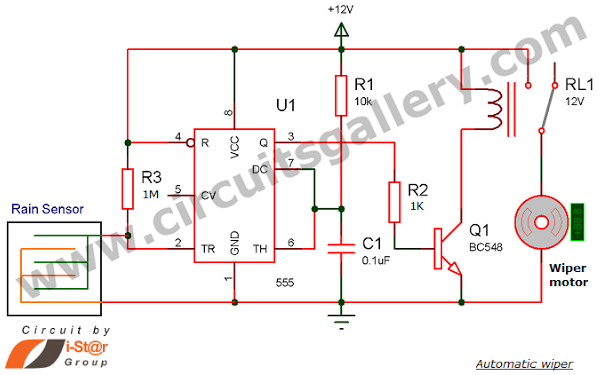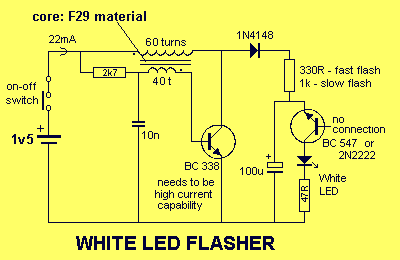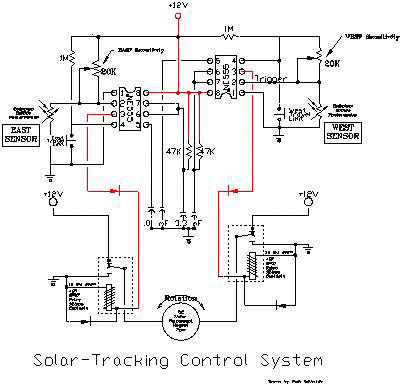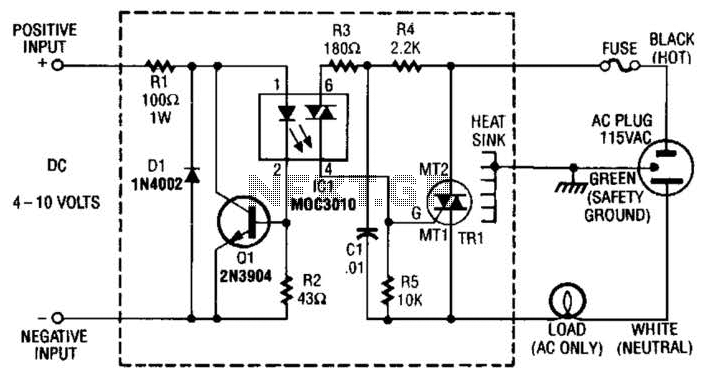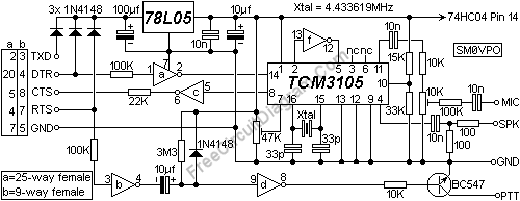
5v regulator circuit using lm105
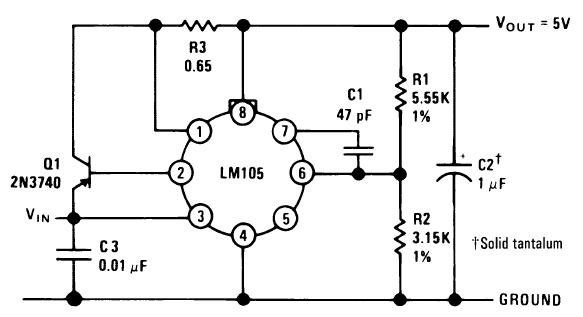
A single diffused, wide base transistor, such as the 2N3740, is recommended due to its reduced tendency to cause oscillation issues compared to double diffused, planar devices. Additionally, it exhibits greater reliability under overload conditions, and low-cost options are available in power packages like the TO-66 or TO-3. For applications where the maximum dissipation of the pass transistor is less than approximately 0.5W, a 2N2905 can be utilized as the pass transistor. However, careful attention must be paid to thermal deratings, and a heat sink is advisable. In this circuit, the output voltage is determined by resistors R1 and R2, which are selected based on a feedback voltage of 1.8V to Pin 6 of the LM105. To maintain thermal drift of the output voltage within specified limits, the parallel combination of R1 and R2 should be around 2K, although this value is not critical. Variations of ±30% in resistance will not significantly affect temperature drift. The 1 µF output capacitor, C2, is necessary to suppress oscillations in the feedback loop involving the external booster transistor, Q1, and the output transistor of the LM105. Capacitor C1 compensates for the internal regulator circuitry, ensuring stability across all loading conditions. Capacitor C3 is generally not required if the lead length between the regulator and the output filter of the rectifier is kept short.
A robust electronic schematic can be derived from the described circuit, which involves a single diffused, wide base transistor like the 2N3740, known for its stability and reliability under various operating conditions. The circuit's design incorporates a pass transistor, which may be a 2N2905 for lower dissipation applications. The careful selection of R1 and R2 resistors is crucial for setting the output voltage, with a target feedback voltage of 1.8V to the LM105’s Pin 6. The combination of these resistors should ideally total around 2K to minimize thermal drift, allowing for some tolerance in their values without compromising performance.
The output capacitor, C2, plays a critical role in maintaining circuit stability by mitigating oscillations within the feedback loop that includes the external booster transistor, Q1. This configuration is vital for ensuring the smooth operation of the LM105 output transistor. Capacitor C1 serves to enhance the stability of the internal regulator circuitry, accommodating varying load conditions effectively. The optional capacitor C3 may be omitted if the physical layout of the circuit is optimized with short lead lengths between the regulator and the rectifier output filter, further enhancing performance and reliability. Overall, this schematic design emphasizes stability, thermal management, and cost-effectiveness, making it suitable for various applications in electronic systems.A single diffused, wide base transistor like the 2N3740 is recommended because it causes fewer oscillation problems than double diffused, planar devices. In addition, it seems to be less prone to failure under overload conditions; and low cost devices are available in power packages like the TO-66 or even TO-3.
When the maximum dissipation in the pass transistor is less than about 0. 5W, a 2N2905 may be used as a pass transistor. However, it is generally necessary to carefully observe thermal deratings and provide some sort of heat sink. In this circuit the output voltage is determined by R1 and R2. The resistor values are selected based on a feedback voltage of 1. 8V to Pin 6 of the LM105. To keep thermal drift of the output voltage within specifications, the parallel combination of R1 and R2 should be approximately 2K.
However, this resistance is not critical. Here is a schematic drawing: Variations of ±30% will not cause an appreciable degradation of temperature drift. The 1 µF output capacitor, C2, is required to suppress oscillations in the feedback loop involving the external booster transistor, Q1, and the output transistor of the LM105.
C1 compensates the internal regulator circuitry to make the stability independent for all loading conditions. C3 is not normally required if the lead length between the regulator and the output filter of the rectifier is short.
🔗 External reference
A robust electronic schematic can be derived from the described circuit, which involves a single diffused, wide base transistor like the 2N3740, known for its stability and reliability under various operating conditions. The circuit's design incorporates a pass transistor, which may be a 2N2905 for lower dissipation applications. The careful selection of R1 and R2 resistors is crucial for setting the output voltage, with a target feedback voltage of 1.8V to the LM105’s Pin 6. The combination of these resistors should ideally total around 2K to minimize thermal drift, allowing for some tolerance in their values without compromising performance.
The output capacitor, C2, plays a critical role in maintaining circuit stability by mitigating oscillations within the feedback loop that includes the external booster transistor, Q1. This configuration is vital for ensuring the smooth operation of the LM105 output transistor. Capacitor C1 serves to enhance the stability of the internal regulator circuitry, accommodating varying load conditions effectively. The optional capacitor C3 may be omitted if the physical layout of the circuit is optimized with short lead lengths between the regulator and the rectifier output filter, further enhancing performance and reliability. Overall, this schematic design emphasizes stability, thermal management, and cost-effectiveness, making it suitable for various applications in electronic systems.A single diffused, wide base transistor like the 2N3740 is recommended because it causes fewer oscillation problems than double diffused, planar devices. In addition, it seems to be less prone to failure under overload conditions; and low cost devices are available in power packages like the TO-66 or even TO-3.
When the maximum dissipation in the pass transistor is less than about 0. 5W, a 2N2905 may be used as a pass transistor. However, it is generally necessary to carefully observe thermal deratings and provide some sort of heat sink. In this circuit the output voltage is determined by R1 and R2. The resistor values are selected based on a feedback voltage of 1. 8V to Pin 6 of the LM105. To keep thermal drift of the output voltage within specifications, the parallel combination of R1 and R2 should be approximately 2K.
However, this resistance is not critical. Here is a schematic drawing: Variations of ±30% will not cause an appreciable degradation of temperature drift. The 1 µF output capacitor, C2, is required to suppress oscillations in the feedback loop involving the external booster transistor, Q1, and the output transistor of the LM105.
C1 compensates the internal regulator circuitry to make the stability independent for all loading conditions. C3 is not normally required if the lead length between the regulator and the output filter of the rectifier is short.
🔗 External reference
